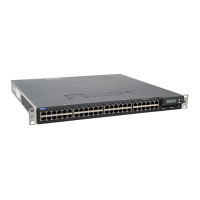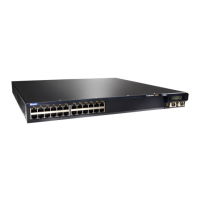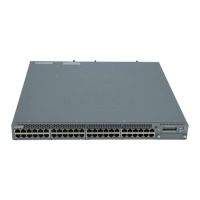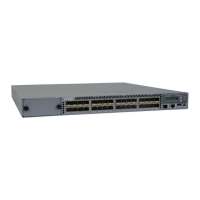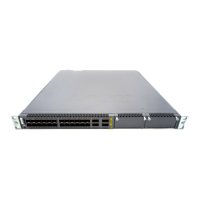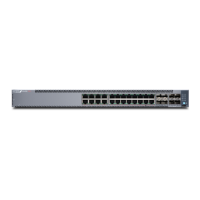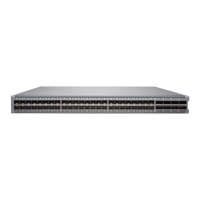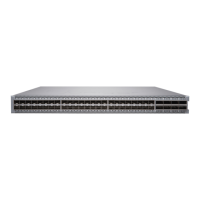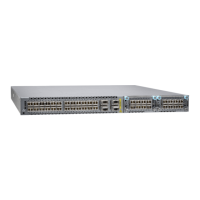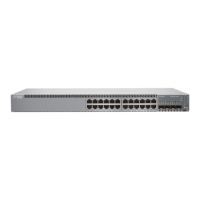SFP Uplink Module
Figure24 on page 35 shows the SFP uplink module, which provides four ports for 1-gigabit
SFP transceivers.
Figure 24: SFP Uplink Module
SFP uplink modules are shipped with dust covers preinstalled in the ports.
NOTE: On an EX3200 switch, if you install a transceiver in an SFP uplink module, a
corresponding network port from the last four built-in ports is disabled. For example,
if you install an SFP transceiver in port 2 on the uplink module (ge-0/1/3), then ge-0/0/23
is disabled. The disabled port is not listed in the output of show interface commands.
The SFP uplink module requires Junos OS for EX Series switches, Release 9.0 or later.
SFP+ Uplink Module
SFP+ uplink modules can be used for either SFP+ or SFP transceivers. You configure the
operating mode on the module to match the type of transceiver you want to use—for
SFP+ transceivers, you configure the 10-gigabit operating mode, and for SFP transceivers,
you configure the 1-gigabit operating mode. See Setting the Mode on an SFP+ Uplink
Module (CLI Procedure).
By default, the SFP+ uplink module operates in the 10-gigabit mode and supports only
SFP+ transceivers. If you have not changed the module from the default setting and you
want to use SFP+ transceivers, you do not need to configure the operating mode.
If the operating mode and the configured mode for an SFP+ uplink module are different,
it is shown in the output of show chassis pic fpc-slot slot number pic-slot 1.
Figure 25 on page 36 shows the SFP+ uplink module.
35Copyright © 2010, Juniper Networks, Inc.
Chapter 2: Component Descriptions
